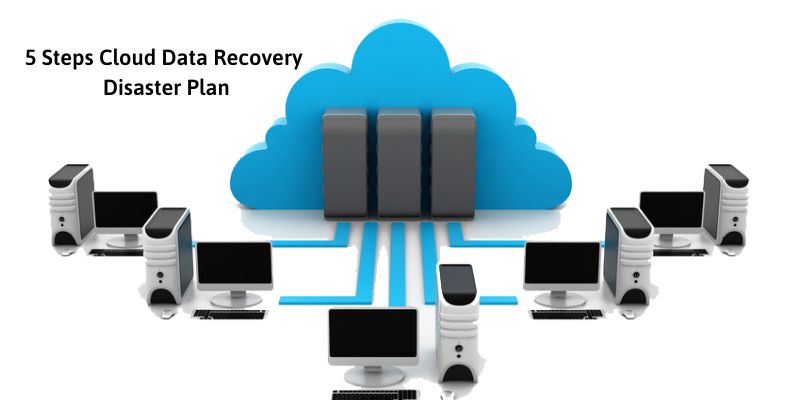In a world where everything is driven by cloud data recovery, the vast majority, if not all, of your crucial company resources are kept digitally on physical servers in the cloud. The use of the cloud for data storage makes it simple to move, update, and retrieve this information. The risk of losing such data in the event of a calamity does, however, accompany the ease of digitalization. The most common causes of data loss include human mistake, power outages, device malfunctions, software corruption, and cybercrime. Read more on aods.info
You can guarantee that your data can be retrieved and restored without interfering with your business activities thanks to cloud backup solutions. Continue reading to discover more about cloud disaster recovery (DR) and the various advantages it may provide your company.
Contents
How to Prepare for Disaster in the Cloud

When you use cloud disaster recovery through a managed service provider, a separate organization that is not affiliated with your business manages your disaster recovery. This strategy enables you to concentrate on ongoing business operations and goals while leaving the intricate technical details to the professionals.
The cloud-based backup and restore technique adopts a hybrid approach to cloud data recovery disaster recovery (DR), with original data and apps being on-premises and backup data being kept in the cloud. In the event of a data loss, the cloud backup data is restored to the hardware located on-site. When significant volumes of data must be recovered on-site quickly, this recovery approach may be more difficult.
Replication in the cloud data recovery can be the ideal way for your company if you need a strategy that has the finest recovery time objectives (RTO) and recovery point objectives (RPO). RTO relates to how quickly recovery occurs, whereas RPO is the point from which you wish to recover. With this method, replicating cloud virtual machines can create both a data backup and a second copy of the data in case of a data disaster. Although efficient, cloud replication is one of the trickier approaches to cloud disaster recovery.
Cloud Disaster Recovery’s advantages

Using cloud data recovery disaster recovery solutions has several advantages. In addition to assisting you in recovering crucial data in the event of a loss, having a cloud DR strategy in place can also provide the following benefits:
Reduction in downtime
Cloud disaster recovery software makes it possible for you to swiftly restore your systems after an IT interruption, unlike traditional recovery procedures that frequently need for you to repair or replace hardware and other on-site equipment to address data loss.
Improved dependability
You can regularly test your networks without causing system disruptions thanks to cloud data recovery recovery technologies. You can rely on your optimal recuperation plan to function as needed and at the appropriate time as a consequence.
Options for flexible pricing
When it comes to prices, cloud data recovery backup options are significantly more flexible than conventional data recovery techniques. Your business can use regular monthly charges to pay for services and resources as you go, especially when employing the MSP strategy. Your monthly costs will adjust as your needs vary.
Quick and simple deployment and setup
You don’t need to spend time or money on gear, software, or actual on-site server locations once you’ve decided to execute the disaster recovery part of your business continuity strategy. Work together with an MSP, and they’ll aid you with business continuity planning and disaster recovery testing.
5 Steps Cloud Data Recovery Disaster Plan

The ideal cloud data recovery disaster recovery strategy for your business may be created in a few easy steps.
Step 1: Evaluate
All potential risks to your present IT infrastructure and their potential effects. Determine any weaknesses that could cause or be impacted by an IT disaster. You should include calculating your workload recovery point goal (RPO) and recovery time objective (RTO) in your study. You may choose the best cloud data recovery disaster recovery tool with the assistance of this information.
Step 2: Choose a strategy
Next, decide which recovery strategy you want to use, whether it be working with an MSP, using disaster recovery to or from the cloud, or recovering data via cloud-to-cloud virtual machines.
Step 3: Pick a cloud data recovery service provider and MSP
At this stage, if you decide to pursue the cloud data recovery path through an MSP, you would pick the service provider that best suits your requirements. Look for MSPs that place a high priority on assisting you with process configuration, recovery support in the case of an outage, long-term planning, and growth considerations.
Step 4: Carry out your strategy.
Put your recovery strategy in place by collaborating with your MSP and/or cloud data recovery backup software. Prevention, preparation, reaction, and recovery are the four essential elements of every strategy that must be taken into account throughout execution.
Step 5: Consistently test
Examine your systems annually for traps and weaknesses in case of calamity. Even if issues are discovered during testing, you will still be able to make the necessary adjustments to stop the loss of crucial data in the case of a cyber security attack.
Conclusion
Enterprise data recovery is the process of bringing back data that has been lost, damaged, deleted unintentionally, or is otherwise unavailable to a server, computer, mobile device, or storage device (or to a new device if the old one is broken).

